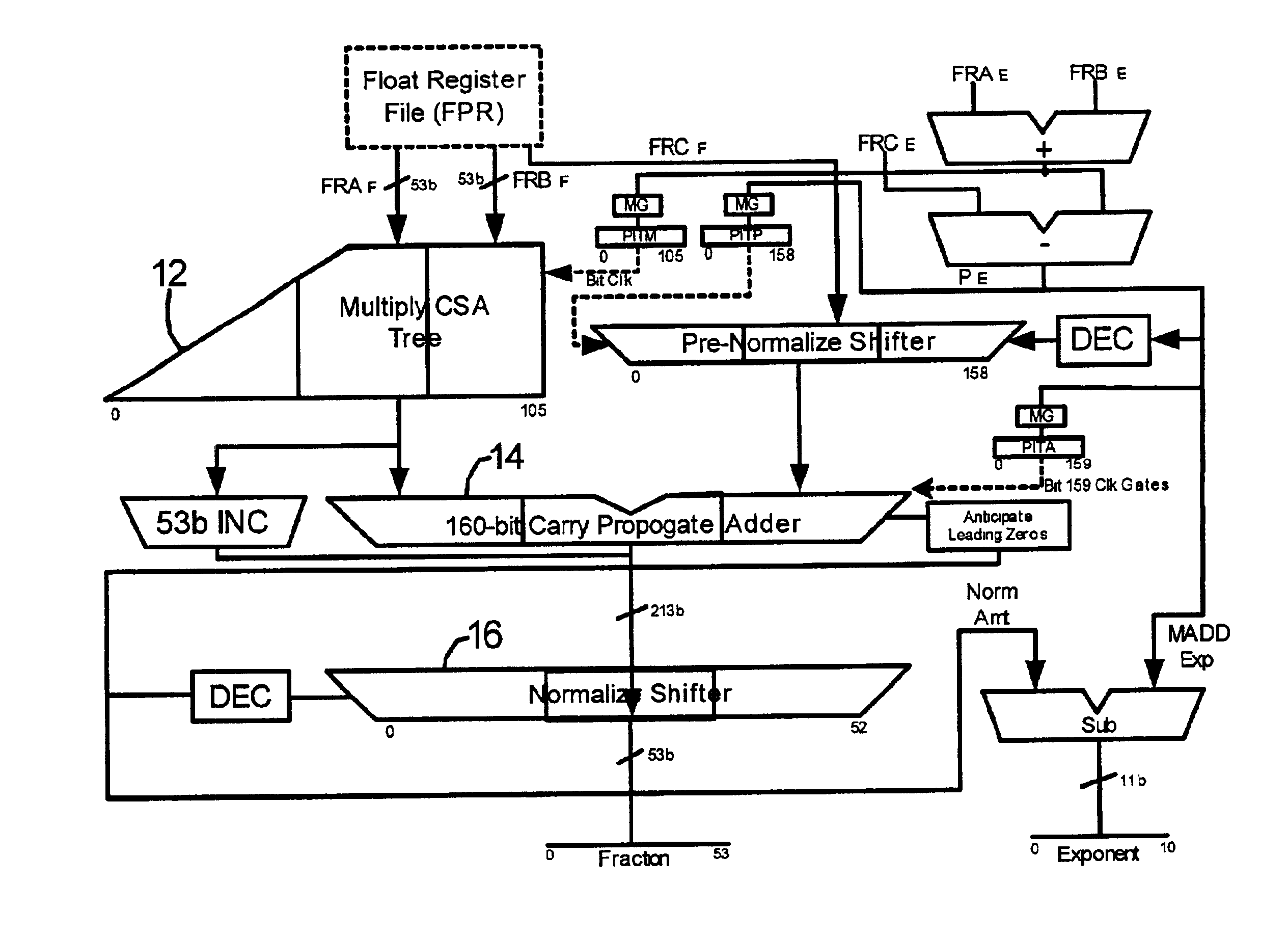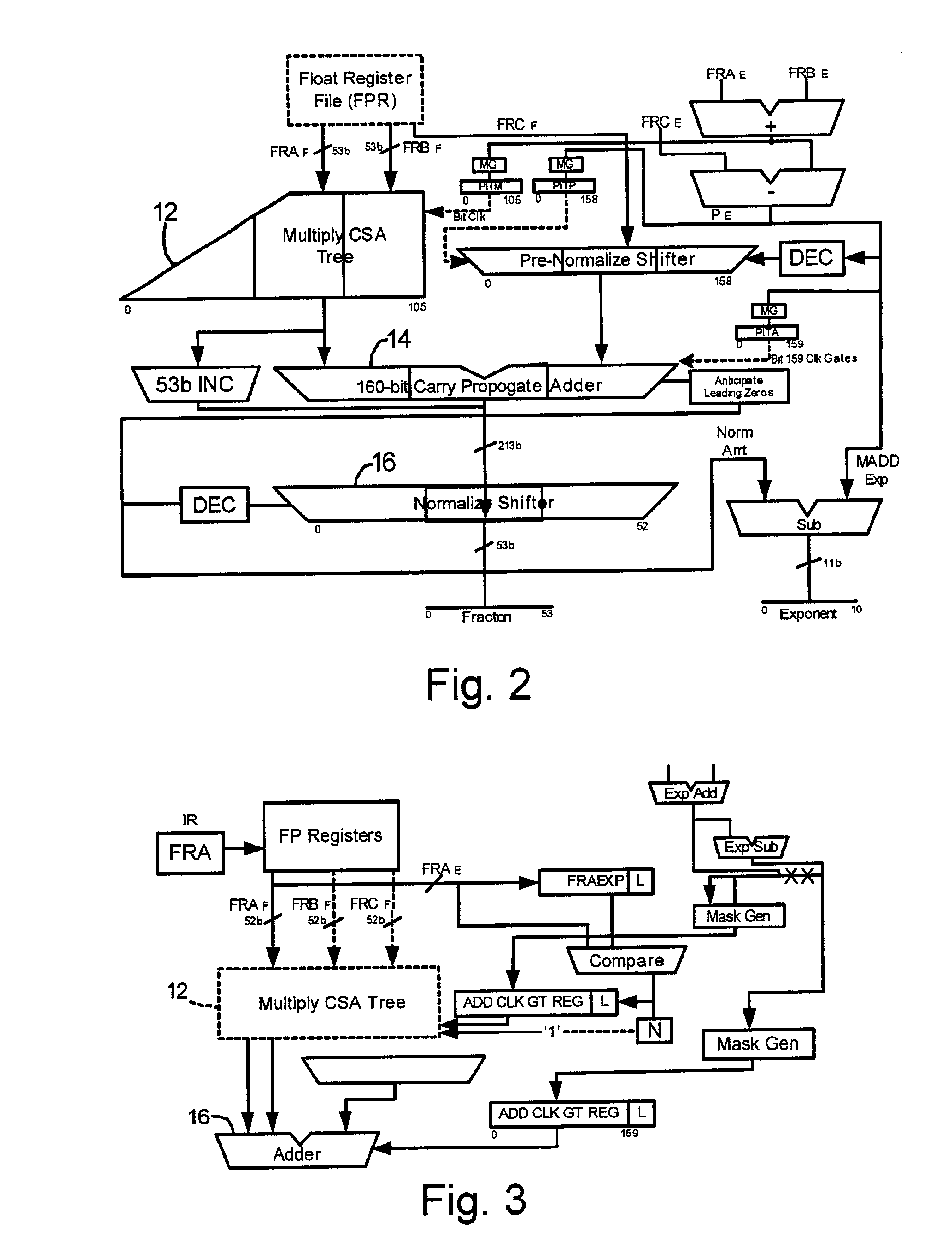Floating point unit power reduction scheme
a power reduction and floating point unit technology, applied in computing, instruments, computation using denominational number representation, etc., can solve the problems of reducing the power consumption of floating point units, exacerbated problems, and increasing the manufacturing cost of processors, so as to and reduce the power consumption of floating units.
- Summary
- Abstract
- Description
- Claims
- Application Information
AI Technical Summary
Benefits of technology
Problems solved by technology
Method used
Image
Examples
Embodiment Construction
[0024]The present invention is particularly adept at minimizing floating point unit (FPU) utilization in the tight inner loop class of problem encountered in the scientific computing domain. An example of such a problem is a DAXPY Loop in which the execution group is comprised of the instructions: LFDU; LFDU; MADD; STU; BC. That series of instructions thus iterates from BC→LFDU′.
[0025]The tight loop problem represents a structured and iterative problem whose repetitive nature can be exploited to save significant chip power. The basic underlying observation is that the large bulk of loop code becomes stride 1 at execution, or in other words, each successive iteration of the loop is with the next sequential double-word (64 b) data element. For physical modeling problems and other scientific applications, the magnitude of adjacent elements being calculated is highly correlated whereby adjacent or near adjacent elements on a modeling grid will almost always have values within a factor o...
PUM
 Login to View More
Login to View More Abstract
Description
Claims
Application Information
 Login to View More
Login to View More - R&D
- Intellectual Property
- Life Sciences
- Materials
- Tech Scout
- Unparalleled Data Quality
- Higher Quality Content
- 60% Fewer Hallucinations
Browse by: Latest US Patents, China's latest patents, Technical Efficacy Thesaurus, Application Domain, Technology Topic, Popular Technical Reports.
© 2025 PatSnap. All rights reserved.Legal|Privacy policy|Modern Slavery Act Transparency Statement|Sitemap|About US| Contact US: help@patsnap.com



